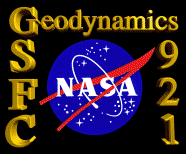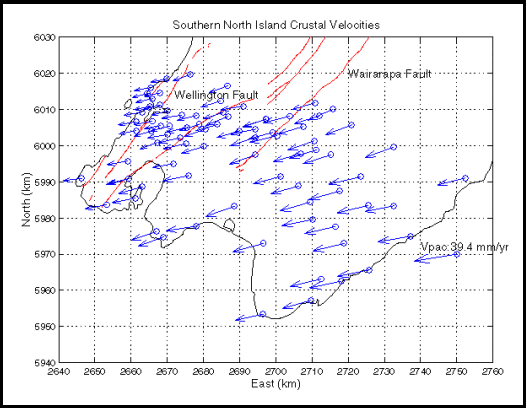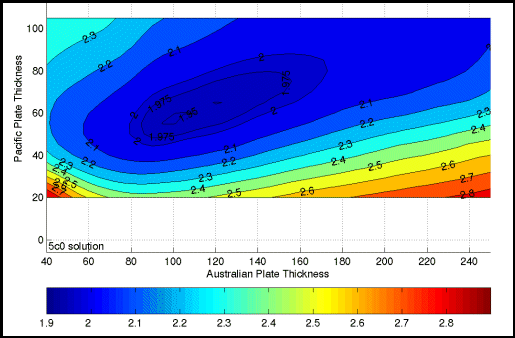

![]()
Results: Elastic plate thickness on an earthquake time scale (~100 years) is greater than on the plate motion time scale (~ million years). Plate coupling extends to 20 km depth. A great earthquake may occur in the future, even though this region has not had one within the last 200 years.

Velocity vectors derived from GPS observations showing motion of the southern portion of North Island, New Zealand, relative to a stable Australian plate. Pacific plate motion also shown. From D. Darby and J. Bevan, J. Geophys. Res. (in press).

Best estimate of Australian plate thickness (~100 km) is greater than typical thicknesses (<50 km) derived for continental plates on a tectonic (million year) time scale. The Pacific plate is also thicker than expected for oceanic plates on this time scale.
Contact: Steve Cohen, GSFC, Code 921 (scohen@carnoustie.gsfc.nasa.gov)
![]()
![]() Back to Geodynamics Science Highlights
Back to Geodynamics Science Highlights
Responsible NASA official: Dr. Herbert Frey